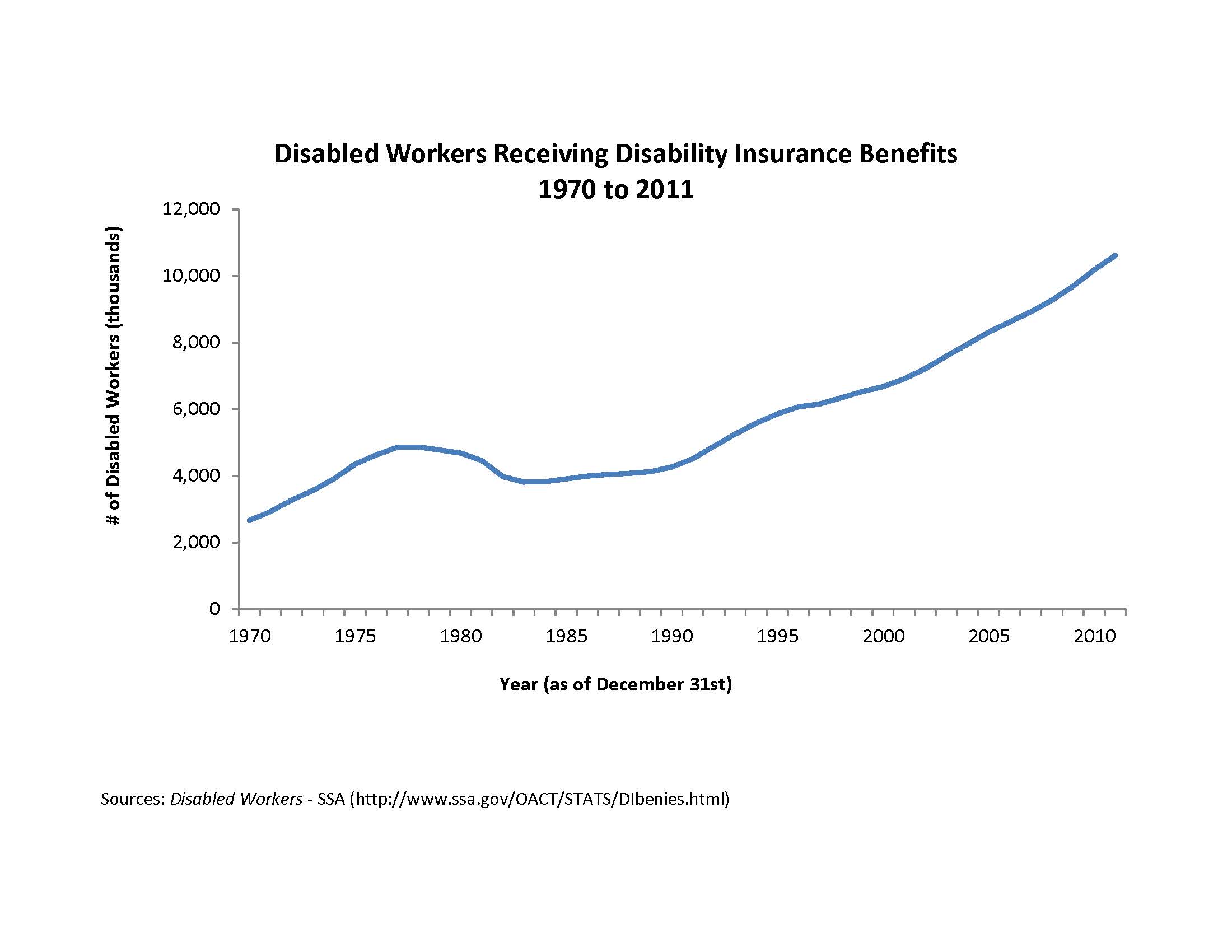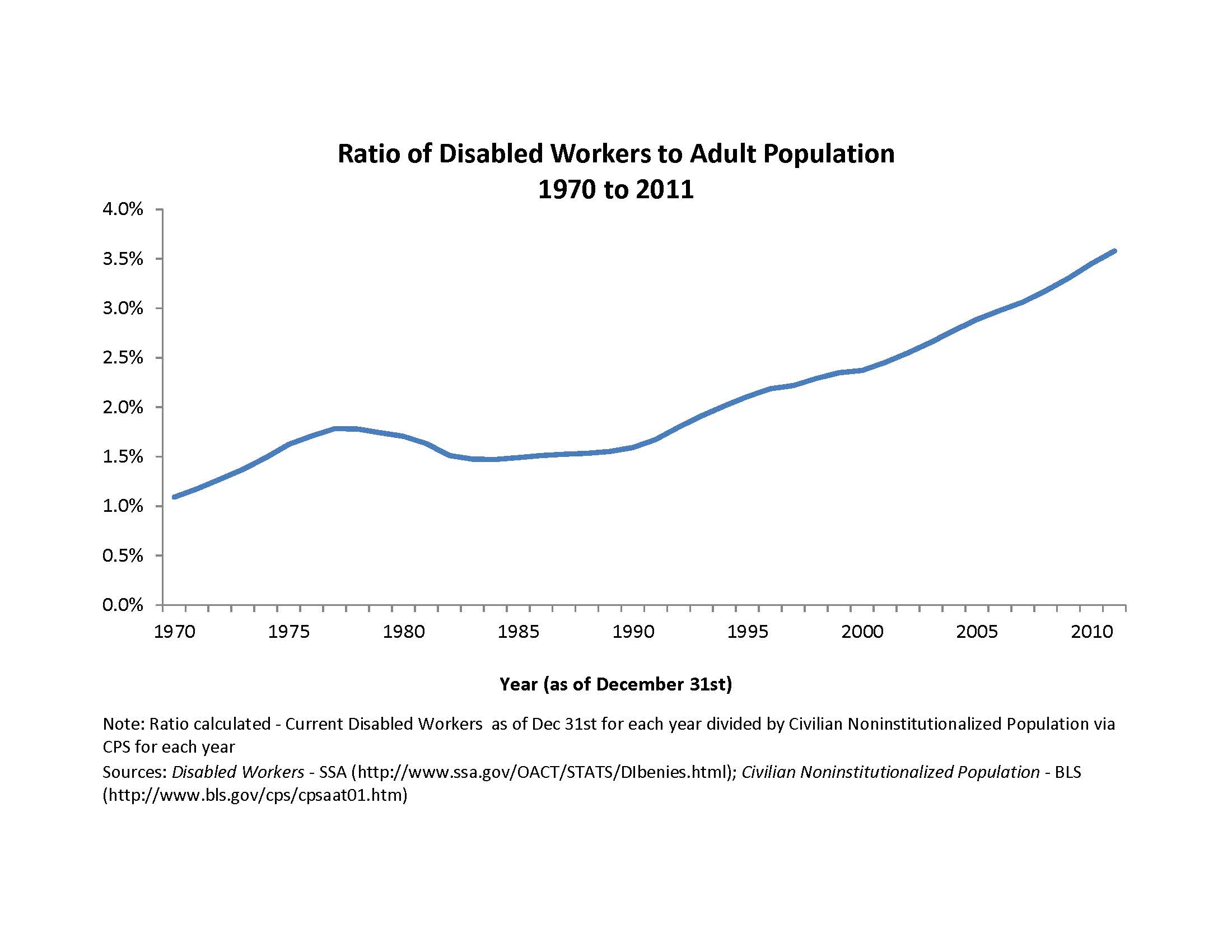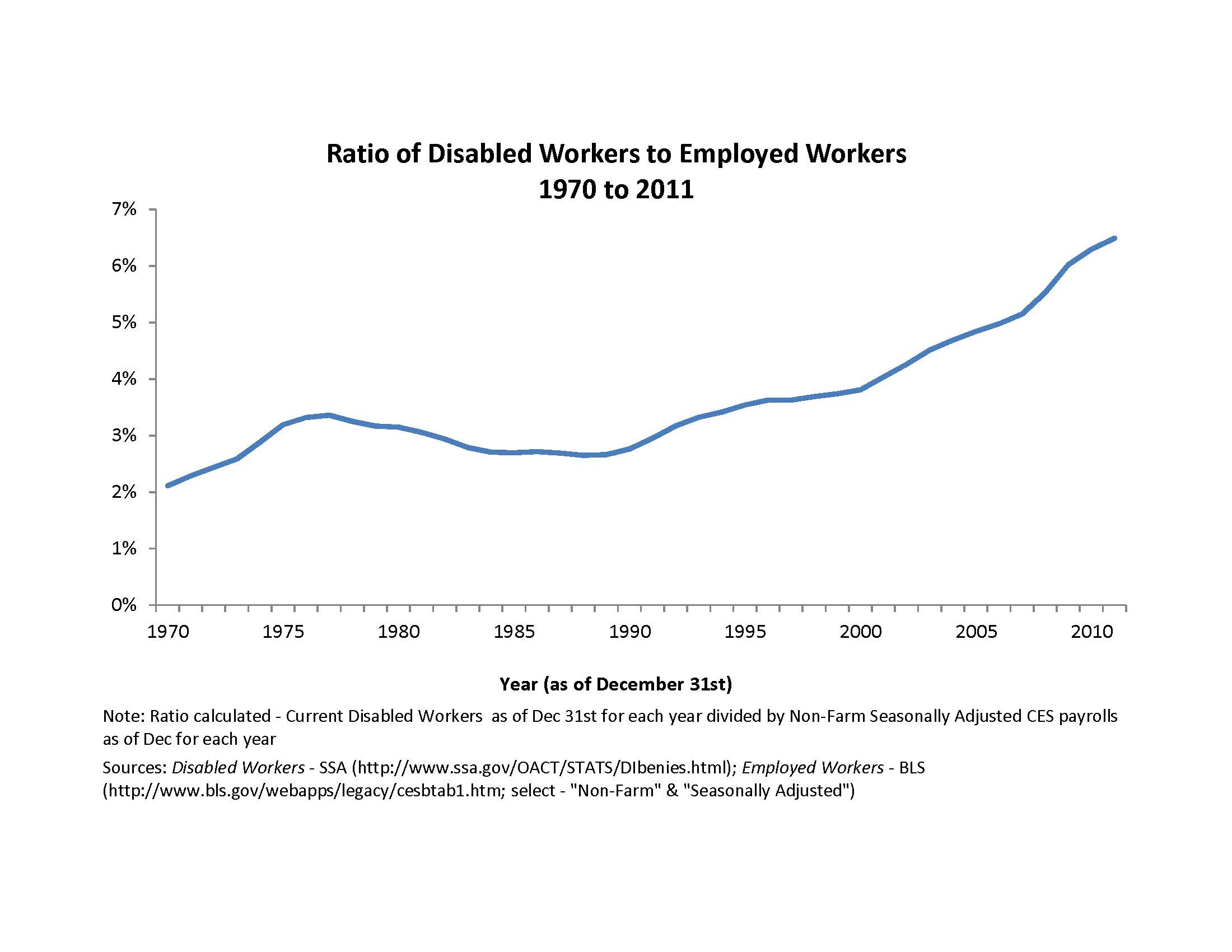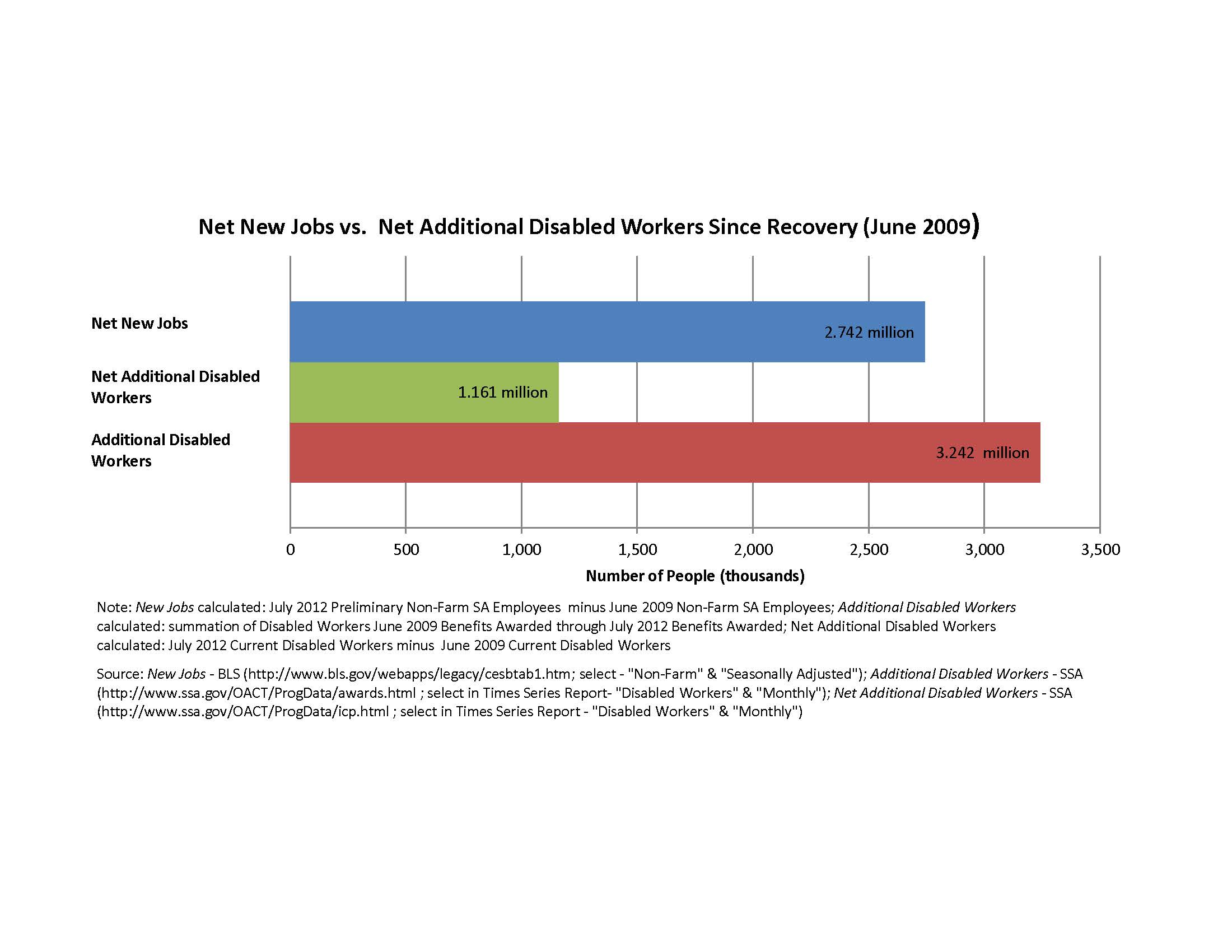After this EconTalk episode with David Autor, I got interested in the changes in the Social Security Disability Insurance program and the increases in the number of recipients. I had also heard claims about the growth in this population over the recession relative to changes in employment and wanted to see if they were true. (Thanks due to Carson Bruno for research assistance and creating the charts.)
First, here is a chart showing the number of disabled workers. This chart, and none of the subsequent charts include spouses or dependents who also receive benefits.

According to Autor, the Carter Administration worked to restrain eligibility and the Reagan Administration continued that policy. Then in 1984, Congress liberalized the law and as you can see, the decline stopped and the numbers began to grow. And grow. An increase of over 6,000,000 workers in 30 years.
Of course population is growing over time. So let’s look at those receiving disability payments as a proportion of the adult (16 and over) population:

There appear to be slight accelerations in the trend in the early 1990s and the early 2000s. But not for the 2008 crisis. Surprising. But the bottom line a large increase in folks receiving money from the government for being defined as disabled. The proportion of the population on disability has more than doubled in the last 30 years. T
Here’s a similar chart but this time it’s total employment in the denominator:

The ratio of workers receiving disability to employment has tripled in the last 40 years. That’s why the Disability Insurance Trust Fund is starting to spend more than it takes in.
Finally, I have read that more people have been added to the disability rolls than added to employment in the recovery from the recession. This is not really true:

The change in the employment rolls is more than double the change in the disability rolls. To make it look like disability is growing faster than employment you have to include all new disabled workers and ignore those who die, retire etc. If you want to include those folks, then you have to look at new jobs created not just net new jobs. So in an apples-to-apples comparison employment is growing much faster than disability.
Still the growth in disability is alarming. This excerpt from the Autor podcast will give you an idea of the role of education (or lack thereof) and the role law firms play in benefitting from getting people onto disability:
[display_podcast]



